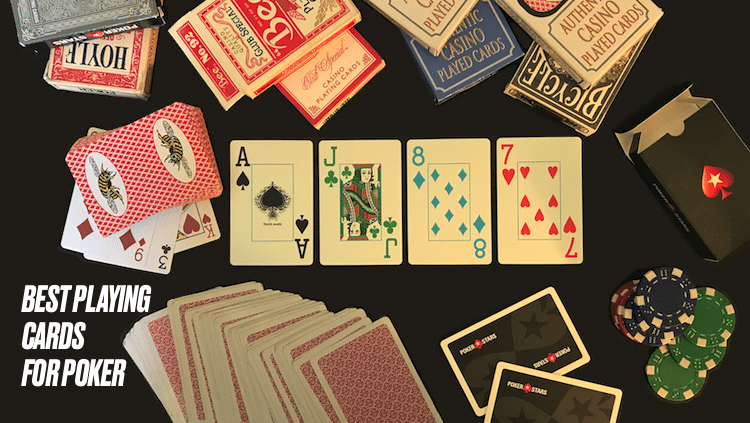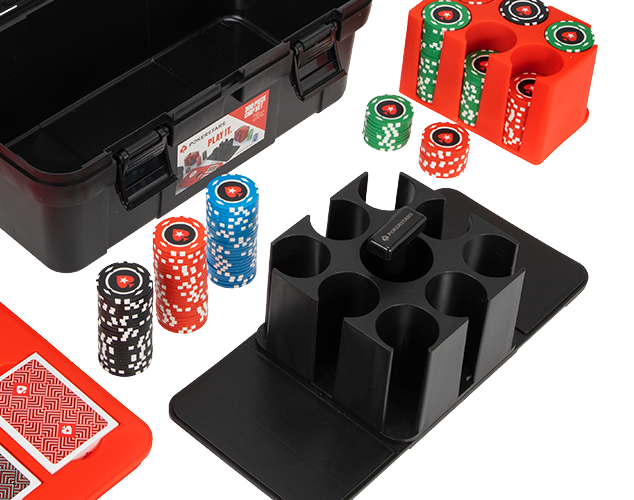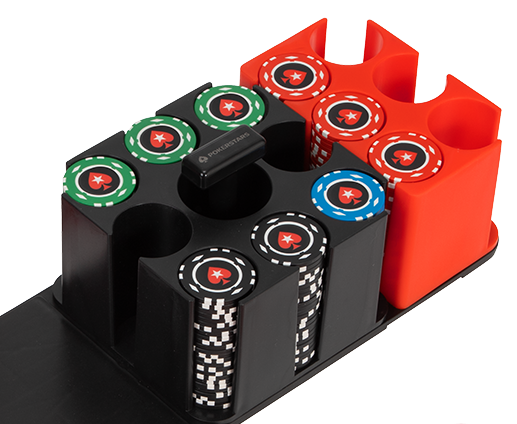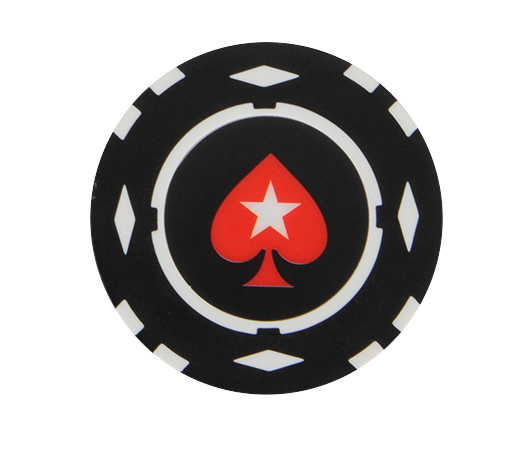We’re all familiar with the look and feel of a “standard” deck of playing cards. Poker players in particular spend a lot of time with cards in their hands, making them excellent judges of the best playing cards for poker.
The appearance of the cards and design on the backs might first capture an observer’s attention. But players know the best quality playing cards not only look good, but are durable as well and can handle all the shuffling, dealing, tossing, and squeezing that goes on in a poker game.
Veterans of poker home games who also frequently play in casinos and card rooms know there is often a difference in quality of the cards used. In home games we often encounter a wide variety of inexpensive decks, while most casinos use higher quality playing cards that aren’t as easy to damage.
Let’s talk about the best type of playing cards for poker games in particular. What cards do professionals use? Are plastic cards the only way to go, or are there other options? What brands are considered the best playing cards?
We’ll start with a quick discussion of the materials with which playing cards are made and how they compare.
Plastic-coated poker cards versus plastic poker cards
Most playing card manufacturers make cards that are plastic-coated. Sometimes plastic-coated cards are referred to as “paper,” because they are technically paper cards with plastic coating. Most people have decks with plastic-coated cards. The best known brands are Bicycle, Bee, Hoyle, and Aviator along with a few others.
Plastic-coated cards can be great for home games, but they do tend to crease and get marked up fairly quickly. They are usually pretty inexpensive, though, costing just a few bucks at most.
By contrast, higher quality professional poker cards are not just plastic-coated, but 100% plastic. Such decks last a lot longer because they are better able to resist getting creased or bent. They are also easier to shuffle and slide across tables more smoothly.
Of course, plastic decks generally cost a lot more than plastic-coated decks, typically $10-$20 or sometimes even more. Some of the best known brands of top quality plastic cards include Kem, Copaq, Modiano, and Da Vinci.
By the way, playing cards come in different sizes as well. The standard “poker deck” cards are in fact a quarter-inch wider than the cards used in a “bridge deck.” A poker deck is usually 2.5 inches wide and 3.5 inches high. Interestingly, though, some poker rooms use bridge-sized decks, and many players are actually more used to these.
When it comes to the size of the cards, if you get out a ruler and measure, you’ll discover a lot of tiny variations between decks. Poker players generally aren’t going to be too bothered by small differences, as long as the cards aren’t too big and thus less easy to handle — and all the cards are the same size!
Can you buy casino quality playing cards? Yes, you can. You can even sometimes buy used decks from poker rooms — just ask. That’s one way to pick up some higher quality decks at discounted prices.
Poker playing cards, from front to back
When people talk about what makes the best looking playing cards, they’re often referring to the design on the back of the card. The front of the card is important, too, though. For most poker players, functionality matters a lot more than aesthetics when judging the best playing card designs.
The front of the card
We want to be able to see clearly what our hole cards actually are, and what the community cards are, too. Fancy playing cards with creative fronts might look cool, but misreading your hand because of some weird design is anything but.
The “regular” design for the front is what many players prefer. There’s a small image of the card in both the upper left and bottom right corners. That’s where you can turn up a small bit and instantly see if you’ve got the 2♥ or A♠ .
Some cards make this corner image bigger, such as “jumbo index” or “magnum index” cards. These designs can make it easier to identify a card from a distance, say when you’re playing seven-card stud and you’re trying to read your opponents’ up cards from across the table. But the larger image in the corners can sometimes make it harder to look discreetly at your two hole cards when you play Texas hold’em.
You’ll also sometimes find “4-pip” cards that have the designs in all four corners, unlike the regular “2-pip” design. You can also get four-color decks such as the one featured in the image up above. But check first with your fellow players before you introduce those into your game, as some prefer the traditional two-color decks.
In any case, don’t neglect looking at how the front of the card is designed. Think about what design best suits both the game you are playing and the players who take part.
The back of the card
Sticking strictly with function and not getting into aesthetics, when it comes to the backs of the cards, there is one factor that can matter to poker players — whether or not the back features a “one-way” or “two-way” design.
Cards with “two-way” backs look the same if you turn them upside down. “One-way” backs don’t. Think of a card not with an abstract design on the back, but a photo or drawing that is meant to be viewed one way. That’s a one-way design.
Poker players prefer “two-way” backs. (All of those shown in the image up top are two-way cards.) That’s what you’ll almost always see in casinos.
The reason is because it is less easy to cheat with two-way cards than with one-way cards. If it’s a casual home game played mostly for fun, it probably won’t matter. But as a rule, most serious players are going to want to play with two-way cards.
Conclusion
By the way, if you are buying decks of cards for your home games and want the games to have a professional feel, consider getting a “cut card” to put on the bottom of the deck to hide the last card when dealing. Sometimes you can just use the joker or other extra cards that come with decks such as ones showing poker hand rankings.
Many poker players like to collect decks of playing cards, including specially designed ones better suited for display than actual game play.
But when deciding upon the best poker cards for your home game, consider the factors discussed above before you shuffle up and deal.
Back to Top











